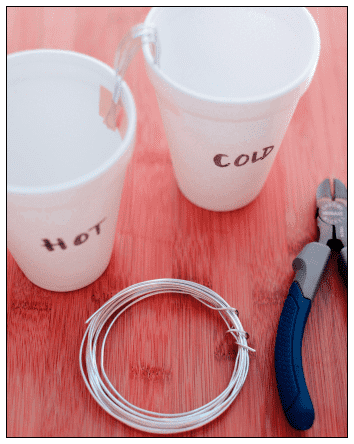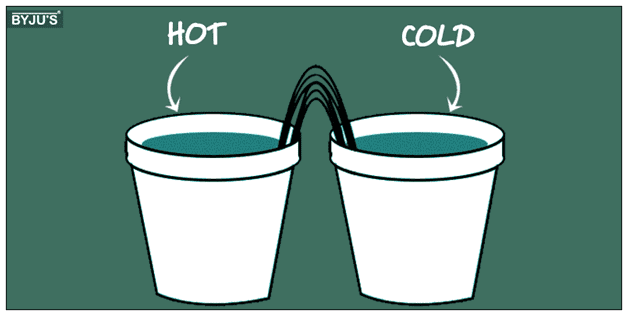
During winter, walking on the living room tiles feels much colder than walking on the carpet. Isn’t this a little surprising considering both titles and the carpet are at the same temperature? The different sensations felt by us is explained by the fact that different materials conduct heat at different rates. In this case, the tile conducts heat faster than the carpet, so the tile transfers heat out of your foot faster than the carpet. This property also explains why it is better to stir the soup with a wooden spoon and roast marshmallows by a wooden stick. It is because metallic objects can conduct heat very quickly.
Thermal Conductivity of Metal Rod Experiment
The purpose of this experiment is to describe the effect that varying thermal conductivities have on the heat flow through a given material. Ultimately, this will give a better knowledge of both thermal conductivity and thermal resistance.
Aim
To determine which metal is the best conductor of heat.
Apparatus Required
- At least 12 inches long metal rod that can be made up of either steel, brass or copper. Make sure that every wire has the same thickness.
- Stove
- Water
- A burner to boil the water.
- Four digital thermometers
Procedure
- Fill a large container with water and ice cubes and allow the water to cool for an hour.
- Bend all the metal rod into half to develop metal bridges.

Metal bridge experiment
- Keep the cups in pairs and the three bridges of the same metal exist between every cup. One pair of cup do not have bridges, and this is the control group.
- Place an instant digital thermometer in every cup that contains cold water.
- Pour equal volume of hot water in each pair of cups and make sure that the water covers the ends of the bridges.
- Pour equal amount of cold water in each pair of cups and make sure that the water covers the ends of the bridges.
- Note the initial temperatures of the cold water in a chart and list the time and temperature in degrees.
- Note the temperature of cold water cup for every 5 minutes for 30 minutes. The table needs to have the set(copper, steel), time and temperature.
- Calculate which cup undergoes the greatest change in temperature by subtracting the container’s initial and final temperature.
- Organise the data on a line graph. Plot time on the x-axis and temperature on the y-axis. You can notice the conductivity of each metal. Steeper is the slope, higher is the conductivity.
Conclusion
Copper transfers maximum heat and followed by brass. Steel is the least conductor of heat. The conductivity of heat is the major property of an object and copper has the highest and steel has the lowest conductivity of heat.
Check out more such experiments by clicking on the links provided below:
| Magnetic Levitation Project | How to make a potato clock? |
Stay tuned to BYJU’S to learn more physics related concepts, experiments and more.




Comments